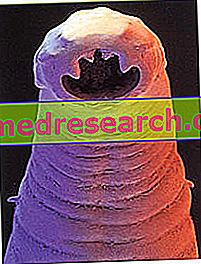Definition
Schizophrenia is a psychiatric pathology characterized by the inability of the individual who suffers to distinguish what is real from what is not. This pathology also interferes with the patients' ability to communicate, to manage emotions, to think coherently and to make judgments.
Causes
There are several hypotheses on what are the triggers of schizophrenia. However, this disease is believed to have a multifactorial aetiology. Among the factors that favor the onset of the disease, we find: heredity, environmental stress, psychological stress and any situations that may have occurred during the gestation period or during birth.
Symptoms
The typical symptoms of schizophrenia can be divided into two groups: positive (or productive) symptoms and negative symptoms.
Among the positive symptoms, we recall: delusions (of persecutory type, of greatness or of reading of thought), hallucinations above all of auditory type, bizarre behaviors and disorders of thought.
Among the negative symptoms, instead, we find: social withdrawal, emotional flattening, poverty of qualitative and quantitative thinking.
Information on Schizophrenia - Drugs for the Treatment of Schizophrenia is not intended to replace the direct relationship between health professional and patient. Always consult your doctor and / or specialist before taking Schizophrenia - Drugs for the treatment of Schizophrenia.
drugs
Unfortunately, there are currently no real drugs for treating schizophrenia. Therefore, the pharmacological treatment that is undertaken is aimed at reducing the symptoms induced by the pathology. For this purpose, patients with schizophrenia are given antipsychotic drugs.
Furthermore, psychosocial therapy can be used to treat patients with these drugs to communicate and relate to other individuals.

perphenazine
Perphenazine is an antipsychotic belonging to the class of phenothiazines. This active ingredient works by antagonizing D2 receptors for dopamine, one of the neurotransmitters that appears to be involved in the mechanisms underlying the onset of schizophrenia.
Perphenazine (Trilafon ®) is available for oral administration as tablets. The dose of medication usually used in outpatients (adults and children over 12 years of age) is 8-16 mg twice a day.
In hospitalized patients, on the other hand, the dose of medication used ranges from 8 mg to 32 mg, to be taken twice a day.
Haloperidol
Aloperidol is an antipsychotic belonging to the class of butyrophenones. More precisely, he is the progenitor.
This active ingredient works by antagonizing D2 dopamine receptors and also has an affinity for 5-HT2 receptors for serotonin.
Aloperidol (Haldol ®, Serenase ®) is available in pharmaceutical formulations suitable both for oral administration and for intramuscular administration and has therapeutic indications for the treatment of acute and chronic schizophrenia.
When used in the acute phase, haloperidol is usually administered intramuscularly at a dose of 5 mg. The injection should be repeated every hour until adequate symptom control is achieved.
When used in the chronic phase, instead, the dose of haloperidol usually used is 1-3 mg, to be administered orally 2-3 times a day.
Olanzapine
Olanzapine is an atypical antipsychotic belonging to the class of benzazepine derivatives. This active ingredient is an antagonist of dopamine D2 and 5-HT2 receptors of serotonin.
Olanzapine (Olanzapine Teva ®, Zyprexa ®, Zalasta ®, Zypadhera ®, Zyprexa Velotab ®) is available in pharmaceutical formulations that allow it to be administered orally and intramuscularly.
When administered orally, the usual olanzapine dose ranges from 5 mg to 20 mg a day. It will be up to the doctor to establish the most appropriate dose for each individual patient.
Aripiprazole
Aripiprazole (Abilify ®, Abilify Maintena ®) is also an atypical antipsychotic available in pharmaceutical formulations suitable for both oral and intramuscular administration.
For the treatment of schizophrenia, the dose of aripiprazole usually used orally in adult patients is 15 mg per day, preferably taken in the evening. If your doctor thinks it is necessary, you can increase your dose up to a maximum of 30 mg a day.
For intramuscular administration, however, aripiprazole is available as a powder and solvent for prolonged release injectable suspension. The drug can be administered intramuscularly only by a doctor or nurse, at a dose of 400 mg a month.
An interval of at least 26 days must elapse between one administration and another.
Moreover, after the first injection, aripiprazole must be taken orally for another 14 days. After that, the medicine will only be given parenterally.



